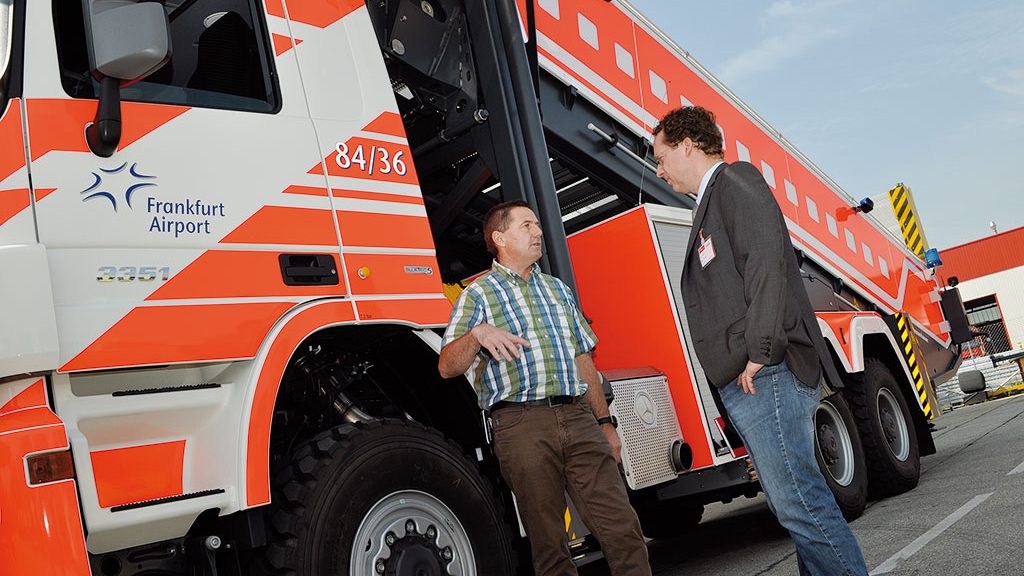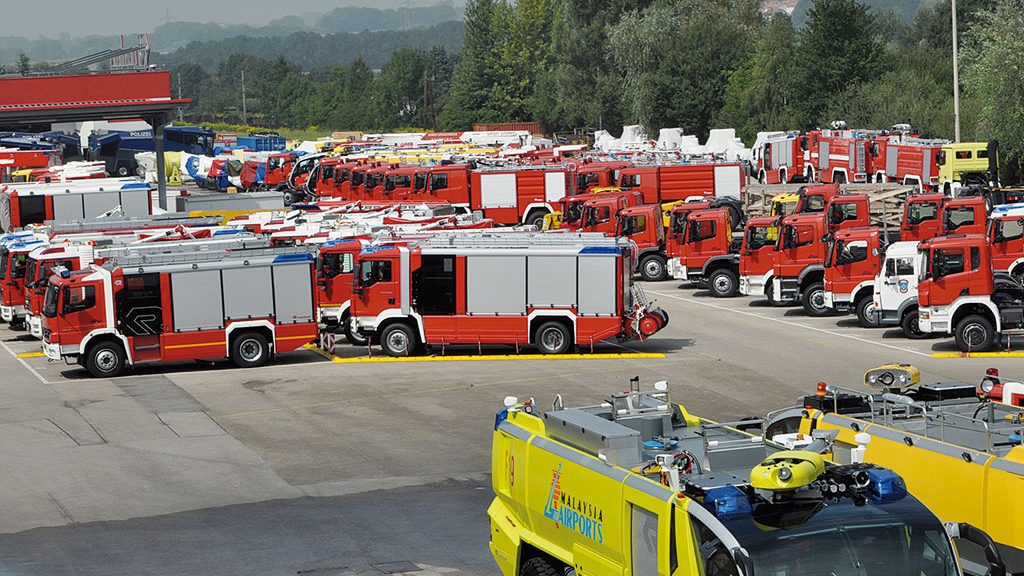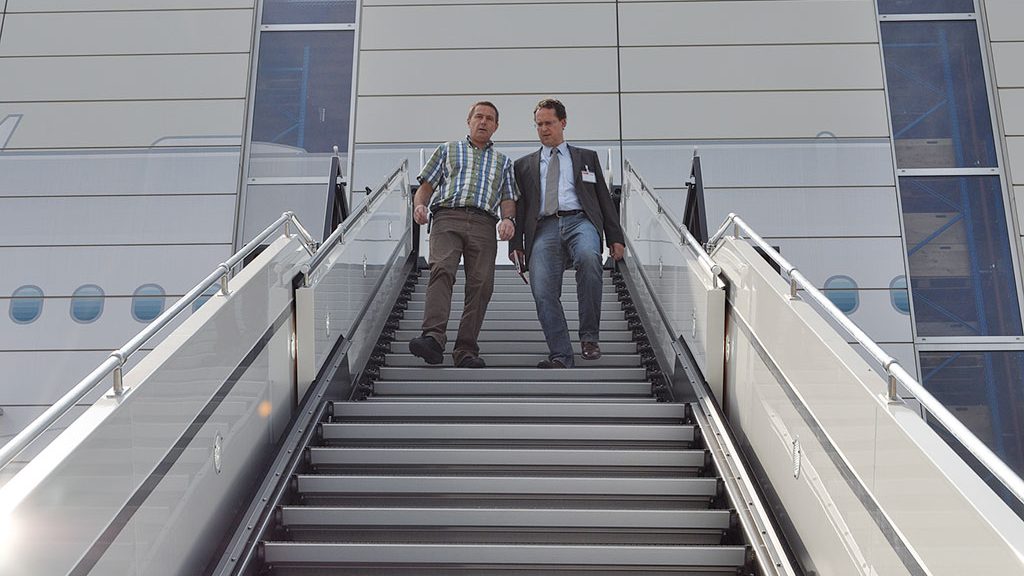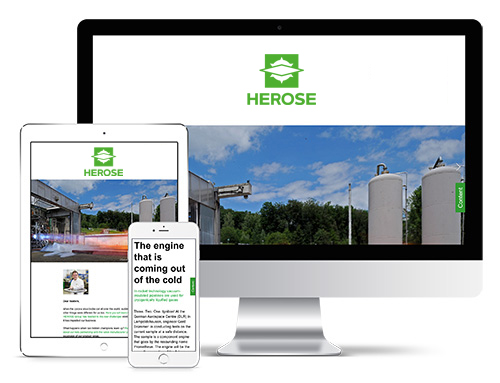You may remember: On 4 November 2010 an Airbus 380 from the Australian airline Qantas had to make an emergency landing at Singapore Airport because an engine had exploded. For the rapid evacuation of the more than 400 passengers, the airport used E8000 rescue stairs made by the Austrian company Rosenbauer – stairs which in certain versions are equipped with HEROSE safety valves.
Leonding near Linz: This is where the Austrian company has its headquarters. Founded as a trading company in 1866, Rosenbauer is now one of the leading manufacturers for equipment for fire and disaster protection and is the world’s largest exporter of fire service vehicles. In 2010 company sales amounted to about 600 million Euro, with a staff of 2000. We have an appointment with Günter Weigl. The Project Manager has been with Rosenbauer since 1975 and was responsible for the development of the E8000 rescue stairs. The first of these was delivered to Leipzig Airport in the summer of 2010. Then Singapore came and now between five and seven of these vehicles are built every year. Minimum price: 500,000 Euro.
When the talk is of rescue stairs, most people immediately think of burning aircraft and similar disasters, however, luckily the reality is much more mundane. Günter Weigl: “Of course, the E8000 is primarily designed for the rapid evacuation of passengers from large aircraft, but in everyday use it is mainly used for medical emergencies. For example, if a passenger has a heart attack and the aircraft has to make an unscheduled landing it is much cheaper and more efficient if the jet remains on the apron and the patient is evacuated with rescue stairs, rather than the aircraft docking at a finger.” At Frankfurt Airport alone, there are between four and six emergencies of this kind every year. Even though the term rescue stairs sounds unspectacular, from a technical point of view the vehicle belongs to the “top category”, as Project Manager Weigl emphasises. Effective rescue stairs have to fulfil two criteria: They have to enable as many people as possible to be evacuated from the aircraft in a short time and they have to be in position as quickly as possible. With the E8000 Rosenbauer has taken both of these factors into account: With an area of eight square metres, the main stairway has a very generously dimensioned top platform. Thanks to a stair width of 1.50 metres, three passengers can climb down together without obstruction. A powerful engine is also important: For example, the Leipzig rescue stairs are equipped with a 480 hp engine. Together with a special transmission, the vehicle can accelerate to 80 km/h in less than 30 seconds. The maximum speed is 105 km/h.
We leave Günter Weigl’s office for a tour of the factory. In the large production hall there are vehicles at various stages of production: fire-fighting vehicles in all colours, for fire services in Ireland, Saudi Arabia or India. Rosenbauer produces 2000 vehicles per year – each of it is produced individually.
The outline of an Airbus 380 are painted on the outside wall of the hall – in original size. On this wall, Weigl demonstrates the speed of the rescue stairs: In just 70 seconds they are extended to their maximum height. They halt at a defined distance from the aircraft and are docked to it via the upper, telescopic platform. This can be extended by up to a metre and swiveled by up to 15 degrees, so that the stairs can be precisely matched to the shape of the aircraft. Proximity sensors and a video camera on the platform assist the operator during the docking maneuver.
The rescue stairs Günter Weigl drives across the company premises for a demonstration this morning are equipped with a telescopic water supply, through which extinguishing water can be supplied from other vehicles. This water supply is equipped with HEROSE Type 06370 safety valves, which prevent any excess pressure. Why HEROSE? “Because for many years this company has stood for the very highest quality”, says Günter Weigl, “and that is what we demand from all of the materials which we use.”
Photos: Carsten Wurr





 Read the current digital customer magazine now!
Read the current digital customer magazine now!
